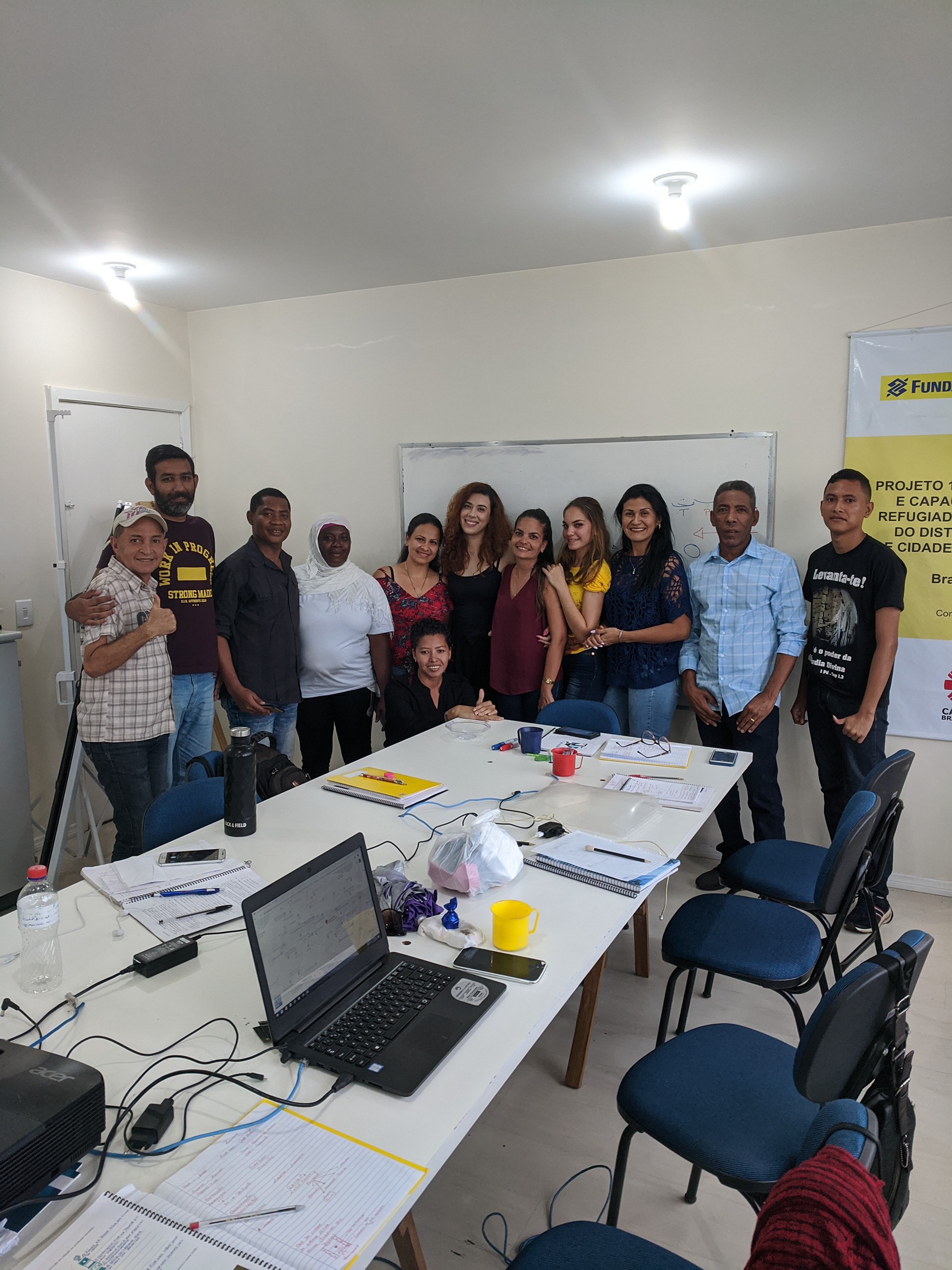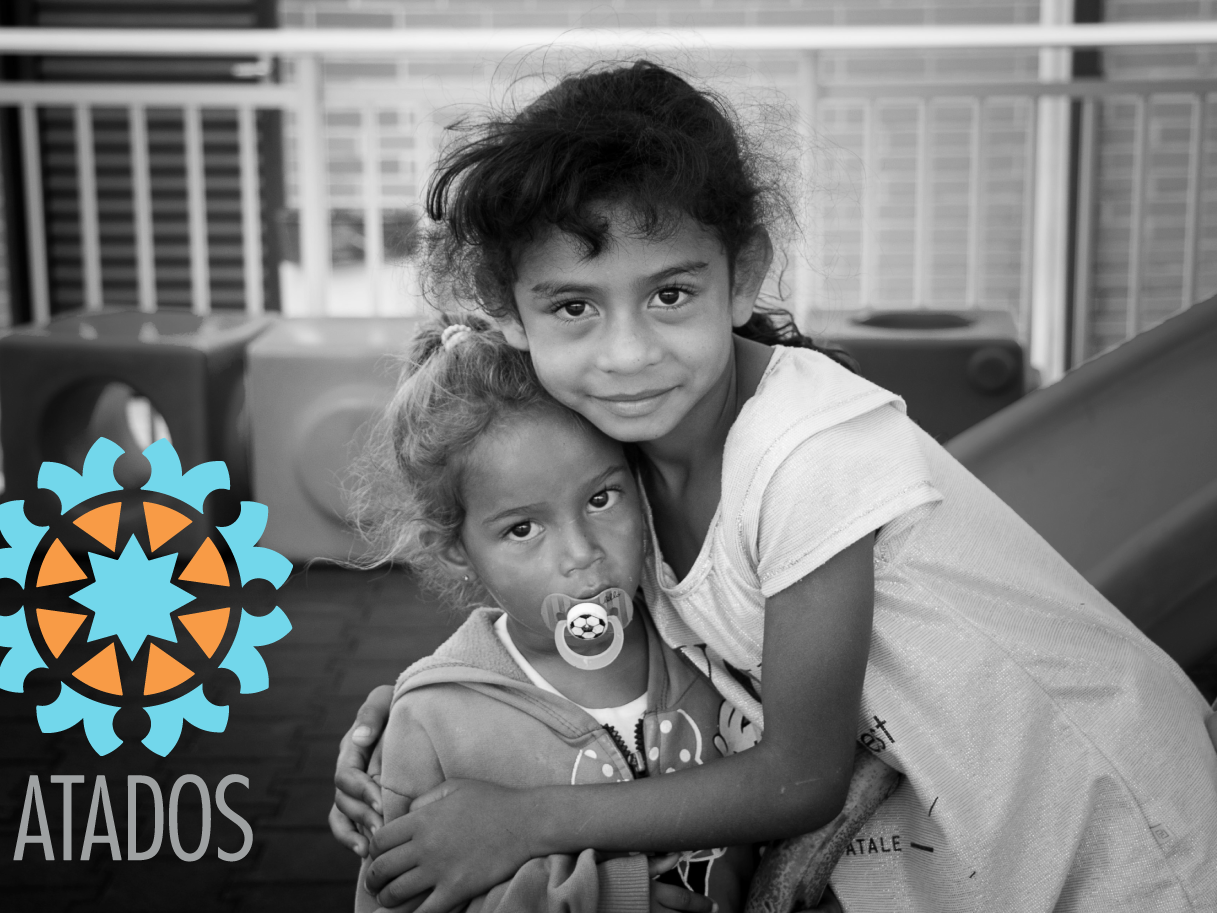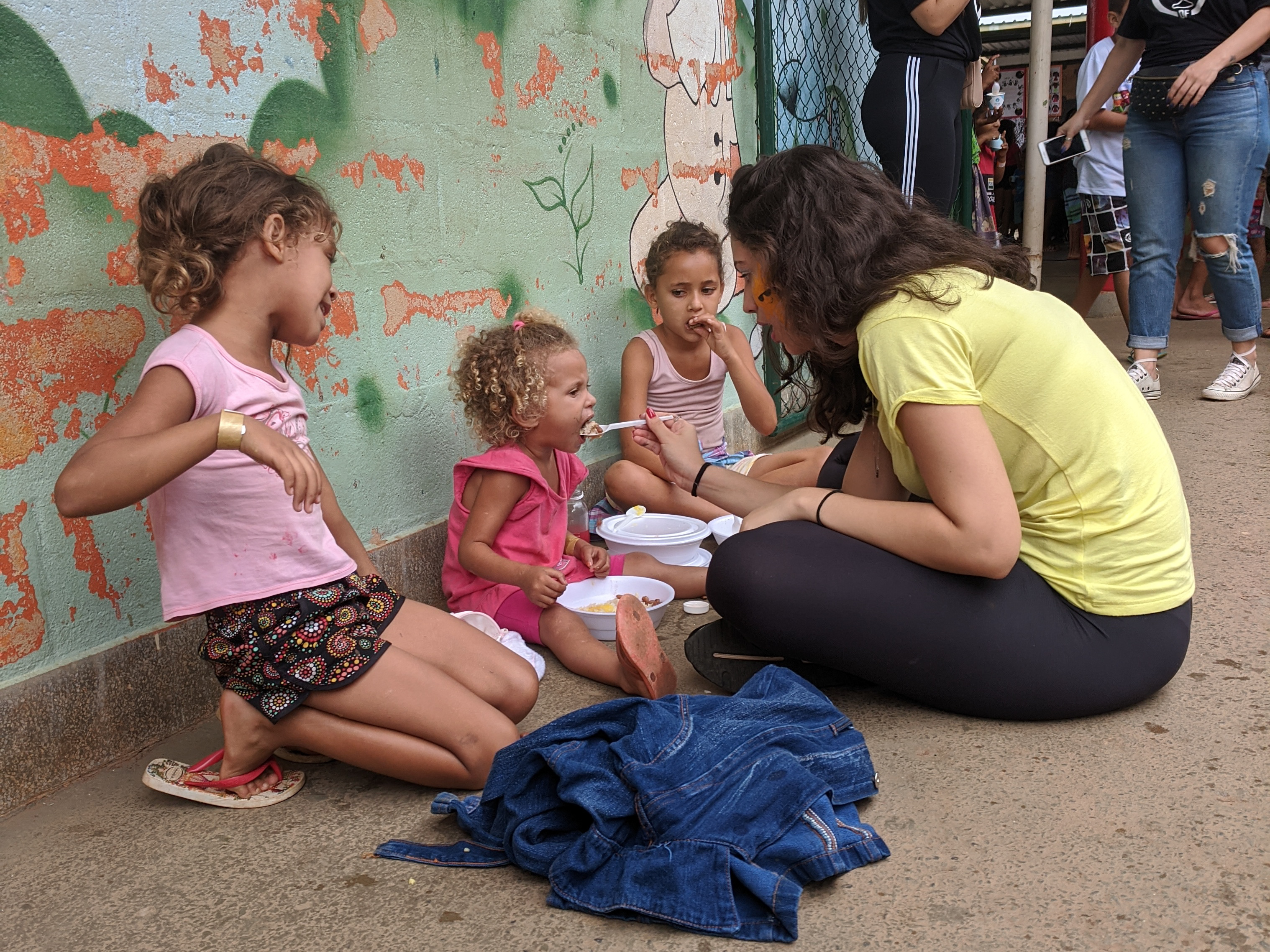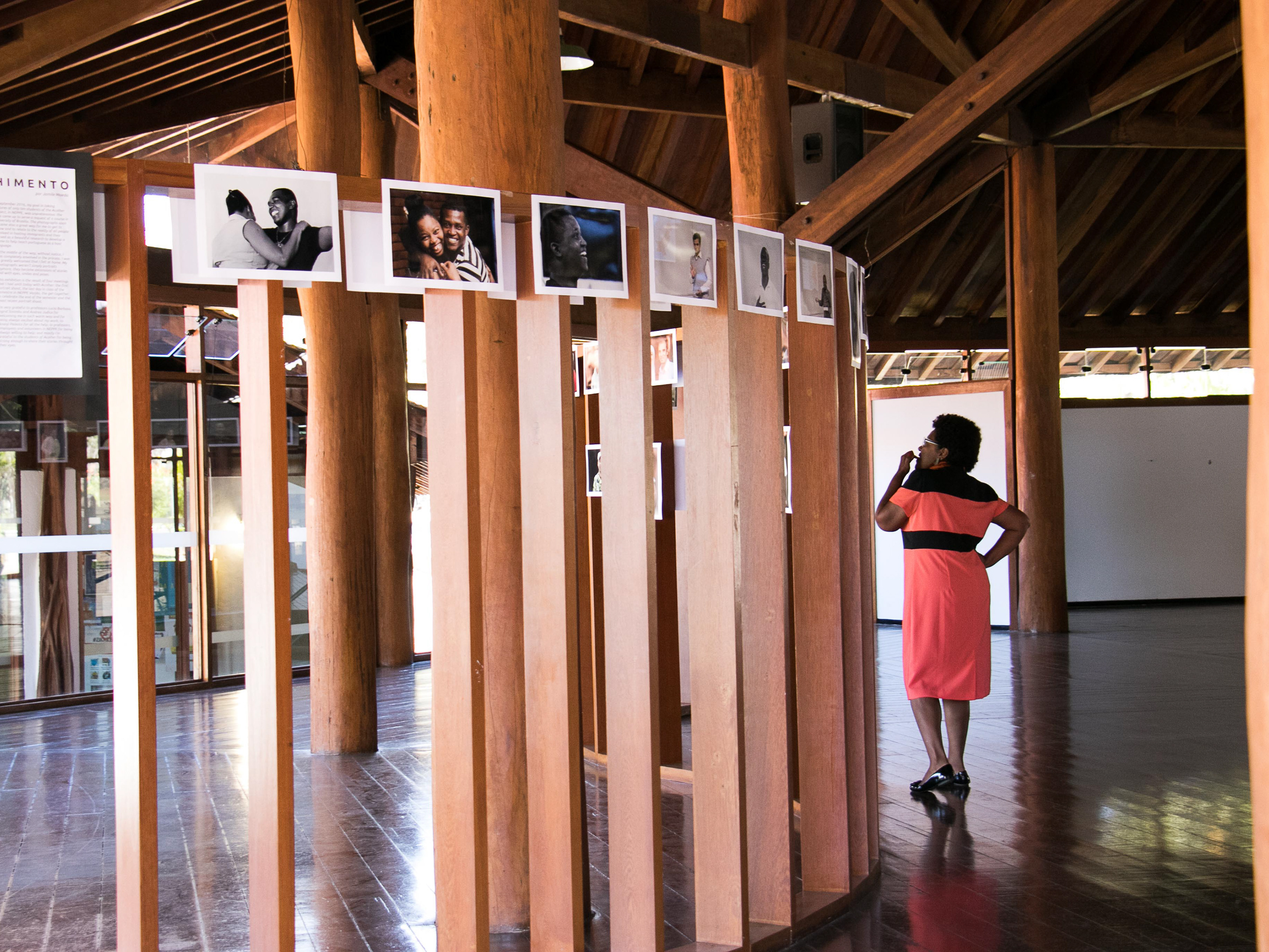

Cáritas Brasileira "has the habit of listening respectfully to the suffering of the poor and of the ones who are in vulnerable situations, and of creating tools to help improve their lives¹ (free translation)". One of its projects was Capacitação para migrantes e refugiados do DF e do Entorno, which was a multidisciplinary training that included classes of Portuguese and Brazilian Culture, Labor Legislation, Solidarity Economy, Entrepreneurship, and Basic Informatics to three mixed group of immigrants and refugees who live in Distrito Federal. Each training took three months to complete, aimed to facilitate the integration of these immigrants and refugees to the Brazilian society, and was called one cycle.
The idea was for the students, after three months, to be able to feel more at ease when interacting with the society in which they live in and, in many times, didn't choose. Might that interaction occur during buying groceries, going to an medical appointment or claiming rights. The classes happened every week day either in the morning or in the afternoon.
I am joyous to have been able to teach Portuguese and Brazilian Culture to the last two cycles in the afternoon. These classes are different from a traditional language course, because the main objective is to ensure communication with the least comprehension problems possible. When we teach what is called Portuguese as a Host Language (Português como língua de acolhimento²), we turn our heads to oral, reading, listening, and writing habilities that are necessary to their daily routines, and these are what guides the our teaching. It is not important that the students perfectly conjugate the verbs or that they know the exact regency of a word, but that they are able to understand what is being said to them out of the school bounds. That is why each lesson, even though they are planned in advance, are many times completely shaped by what the students experience and the teacher should be capable of answer types of doubts that are not even included in the program.
A Cáritas Brasileira "tem a prática de ouvir respeitosamente o sofrimento dos empobrecidos e dos que estão em situação de vulnerabilidade e favorecer ferramentas para transformar suas vidas"¹ e criou a Capacitação para migrantes e refugiados do DF e do Entorno, que ofereceu gratuitamente aulas de português e cultura brasileira, leis trabalhistas, economia solidária, empreendedorismo e informática básica a três turmas mistas de imigrantes e refugiados que moram no Distrito Federal. Cada conjunto de aulas, durante o período de três meses, teve como objetivo facilitar a integração dessas pessoas à sociedade brasileira e foi chamado de um ciclo.
A ideia é que, após esses três meses, os alunos pudessem se sentir mais confiantes ao interagir com a sociedade em que vivem e que, muitas vezes, não escolheram. Seja comprando produtos no supermercado, seja indo ao médico, seja reivindicando direitos. As aulas aconteceram todos os dias, de segunda a sexta, em um período do dia.
Tive a alegria de lecionar as aulas de português e cultura brasileira dos dois últimos ciclos no período da tarde. As aulas diferem de um curso de idiomas, pois o importante é garantir uma comunicação com o mínimo de ruídos possível. Quando ensinamos o que é chamado de Português como língua de acolhimento², focamos em fala, leitura, audição e escrita voltadas para as necessidades cotidianas e é justamente o cotidiano o tema que guia o ensino da língua. Não é importante que os alunos conjuguem o verbo perfeitamente ou que utilizem a regência ensinada nos livros, mas que eles consigam se expressar sem medo e que entendam o que lhes está sendo dito em uma situação fora da sala de aula. Por isso, as aulas, apesar de estruturadas para cumprir certo programa, são, muitas vezes, completamente ditadas pelas vivências dos alunos e é importante que o professor esteja pronto para responder a dúvidas que podem até não estar contempladas no programa.
**
¹ Retirado de: http://caritas.org.br/missao
² SÃO BERNARDO, Mirelle Amaral de; BARBOSA, Lúcia Maria Assunção. ENSINO DE PORTUGUÊS COMO LÍNGUA DE ACOLHIMENTO: EXPERIÊNCIA EM UM CURSO DE PORTUGUÊS PARA IMIGRANTES E REFUGIADOS(AS) NO BRASIL. fólio - Revista de Letras, [S.l.], v. 10, n. 1, ago. 2018. ISSN 2176-4182. Disponível em: <http://periodicos2.uesb.br/index.php/folio/article/view/4045>. Acesso em: 29 jul. 2020. doi: https://doi.org/10.22481/folio.v10i1.4045.
A primeira turma para que dei aula teve em torno de 20 e 25 alunos, e as nacionalidades variaram muito: haitianos, congoleses, egípcios, sírios, togoleses, etc. As línguas nativas eram, principalmente, inglês, francês e árabe, além de dialetos como crioulo e urdu. Eu falo inglês e francês e, por isso, consigo compreender dúvidas específicas e traduções diretas (palavra por palavra, por exemplo) que podem ocorrer por causa das línguas nativas, mas com falantes nativos de árabe, é mais complicado. Uma orientação que se costumam passar para professores de Português como Língua de Acolhimento é não se comunicar na língua do estudante para explicar o assunto, porque ele já está imerso em uma sociedade que fala português e para que outros alunos não se sintam excluídos da conversa, mas a diferença de estrutura da língua, de escrita, de ordem de escrita é desafiador para o aluno, ainda que muitos saibam falar inglês.
Um desafio de se ensinar a uma turma tão diversa é que o nível de conhecimento prévio também é muito variado. É preciso conseguir equilibrar uma aula para que os que sabem menos possam acompanhar, mas ao mesmo tempo que não deixe os que sabem mais entediados. Esse desafio é visível no ensino de Português como Língua de Acolhimento de modo geral, pois os orçamentos das escolas destinadas a esse público ainda são pequenos para conseguir uma separação por nível mais sensível.
**
The first class I taught had approximately 20 to 25 students, and their nationalities varied a lot: Haitians, Congoleses, Egyptians, Syrians, Togoleses, etc. Their native languages were, mainly, English, French, and Arabic, a part from dialects such as Creole and Urdu. I speak English and French, so I can understand some specific doubts and direct translations (word by word for example) that might happen because of their native languages, but with Arabic speakers it is a lot harder. One advise people give when teaching Portuguese as a Host Language is not to speak with the immigrant or refugee in their native language, once they are already in a society that speaks the target language and so that the other students don't feel left out of the conversation. The structure of Arabic, its writing system, and its right-to-left script is more challenging for the students, even when many of them speak English as a second language.
It is hard to teach a such varied classroom, because the previous knwoledge of Portuguese among the students also varies. It is necessary to achieve a lesson that the ones with least knowledge of Portuguese are able to follow without making those who already have some knowledge to not feel bored. This challenge happens in many places that teach Portuguese as a Host Language, since their budget is still too small to be able to have a more sensible division.




O ciclo 3 de aulas ocorreu de setembro a dezembro de 2019. Desta vez, a grande maioria desta turma reuniu hispanofalantes, o que facilita o ensino de português, uma vez que as duas línguas são próximas. Como latinoamericanos, as culturas também se aproximam. Os alunos são mais descontraídos e calorosos. Eu, apesar de não ter formação tradicional em espanhol, tenho bastante conhecimento de estrutura da língua e consigo identificar influências do espanhol na fala dos alunos e no que é preciso reforçar no ensino.
A seguir, algumas fotos do evento de encerramento do ciclo 3.
**
On the third cycle, that happened from september to december 2019, the majority of the classroom was composed by Spanish-speaking students, which facilitates teaching Portuguese, because they are similar languages. As latinoamericans, Brazilians, Venezuelans, and Cubans, our cultures are also close. The students were more casual and warm. Even though I have not had a traditional formation in Spanish, I know the language structure and I can identify Spanish influences on my students' speech and what I need to focus on my teaching.
Next there are some pictures of the closing event of the third cycle of classes.







Foto da esquerda: Meu discurso de encerramento do ciclo 3 de aulas. Foto da direita: Meus alunos com seus certificados. Estas duas últimas fotos não foram tiradas por mim.
**
Picture on the left: My speech to close the third cycle of classes. Picture on the right: My students with their certifications. These two last pictures were no taken by me.









